- Time
- Post link
It's interesting how the Sith have honor while the Empire doesn't. This is the complete opposite of the Starscream-like Sith that we know today.
I've done something like this before, but since my knowledge of the SW rough draft has since increased greatly, I thought I'd have another go.
George Lucas's 1974 rough draft for The Star Wars is full of interesting visual images. Sadly, since the draft is on paper and was never illustrated, many of these images have gone unremarked. I hope in this post (really rather an essay) to illuminate some of those visuals--which is best done, in many cases, by probing into the origins of various elements of the script.
The best way to approach this, I think, is to provide a detailed summary of the script, illustrated throughout by pictures that show just what Lucas had in mind for the look of the film. Accordingly, this will be a long and image-heavy post.
---
The rough draft's principal protagonist is the eighteen-year-old Annikin Starkiller. The script tells us that Annikin and his father, Kane, wear their hair long, in "an odd bun" on top of their heads. This hairstyle is said to be picked up from the inhabitants of the Kessil System, where the Starkillers lived as fugitives for a time.
This "bun" is, in fact, a samurai topknot, and Annikin is meant to resemble Toshiro Mifune in his various samurai roles. This means that Lucas probably imagined Annikin as having black hair.
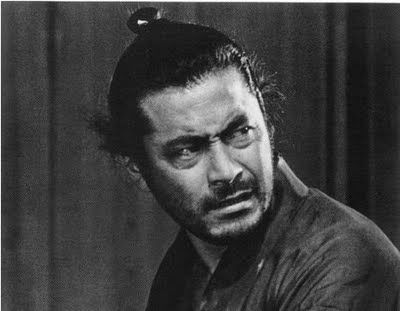
As the pupil of a venerable elder Jedi, Annikin also recalls Katsushiro, the young apprentice samurai in Akira Kurosawa's film Seven Samurai.
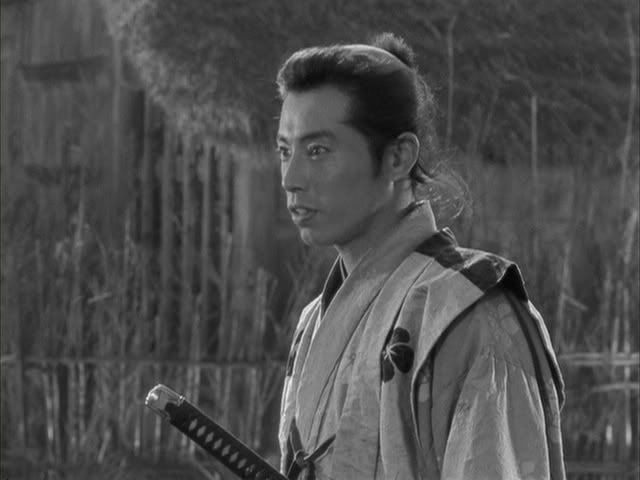
The image of the black-haired warrior figure recurs in Lucas's later work, both in Willow and in early concept art for TPM.
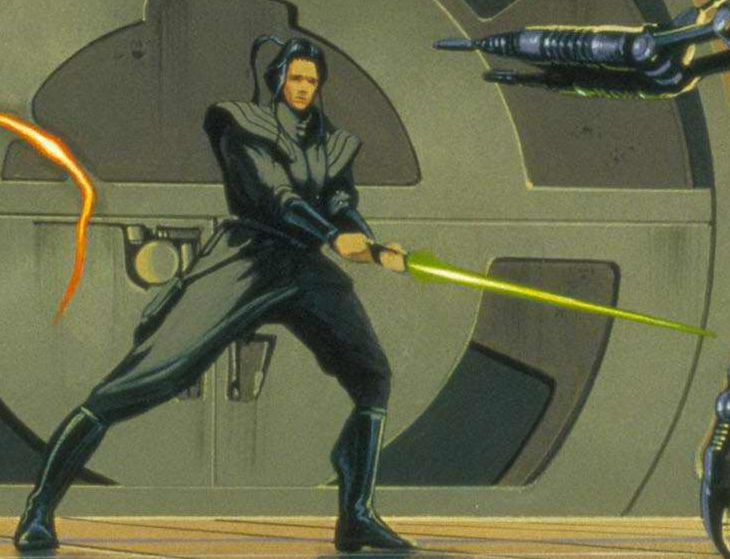
Given Lucas's apparent preference for blue-eyed heroes, Annikin likely has black hair and blue eyes, which would make him resemble the literary version of Conan the Cimmerian. Robert E. Howard's Conan stories appear to have been a notable influence on Lucas's early drafts of SW.
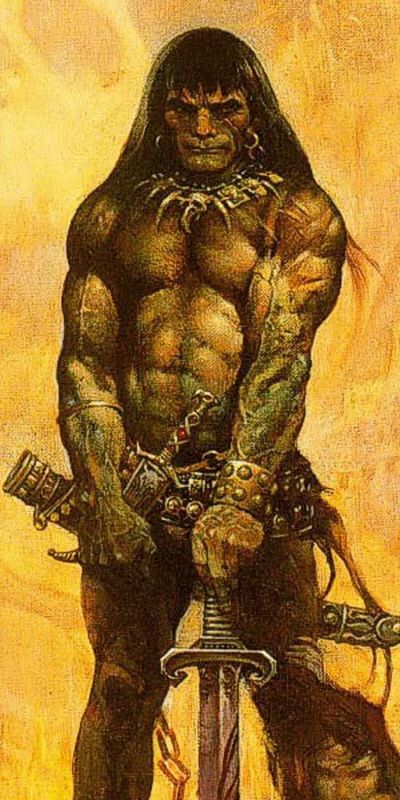
Early in the script, Annikin ends up engaged in a lightsaber duel with a Sith on an arid, desolate planet. The equivalent scene in the second draft (now set aboard a spaceship) would be immortalized in art by Ralph McQuarrie.
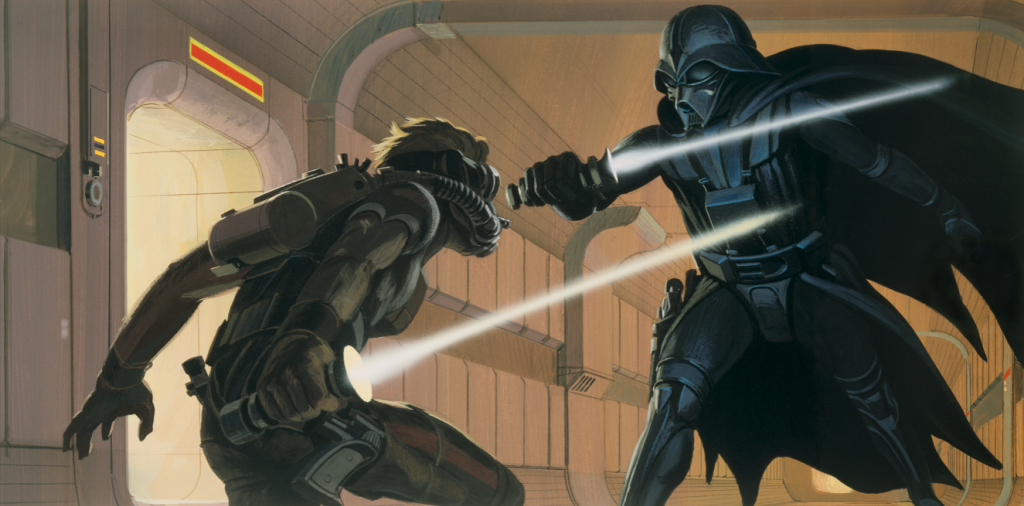
Both Annikin and his Sith opponent are wearing breathing masks, as the air of the planet shown in the film's first scenes is unsuited to humans. These masks are meant to be reminiscent of samurai battle masks.
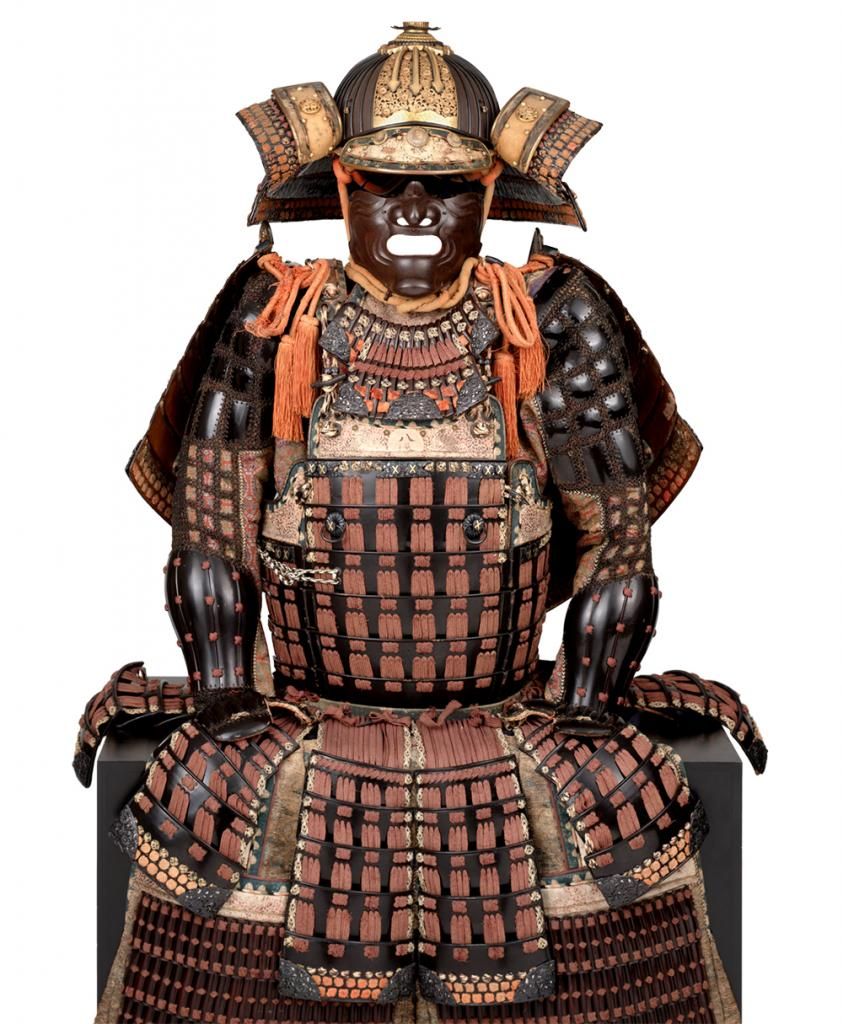
In this draft, Jedi and Sith do not have telekinetic superpowers. That came later--in the second draft, to be precise. At this stage, the Jedi are ferocious warriors because they have trained hard to achieve intense discipline of mind and body. But they are not superhuman, or genetically distinguished in any way from the general population.
(Once Lucas did give the Jedi telekinetic abilities, he began immediately to think of Jedi powers as a heritable genetic trait. In fact, the second draft portrays the Jedi as a set of families whose powers descend from father to son, much in the vein of the Bene Gesserit matrilineal bloodlines from Dune. And, just as Paul Atreides was the opposite-gender culmination of the Bene Gesserit matriarchs' breeding program, Lucas gave serious thought to revising the second draft to make Luke Starkiller a girl.)
Oh, and in the rough draft, everyone's lightsabers are red in color. Which was faithfully reproduced by (most of) the sabers in the recent Dark Horse comic adaptation.
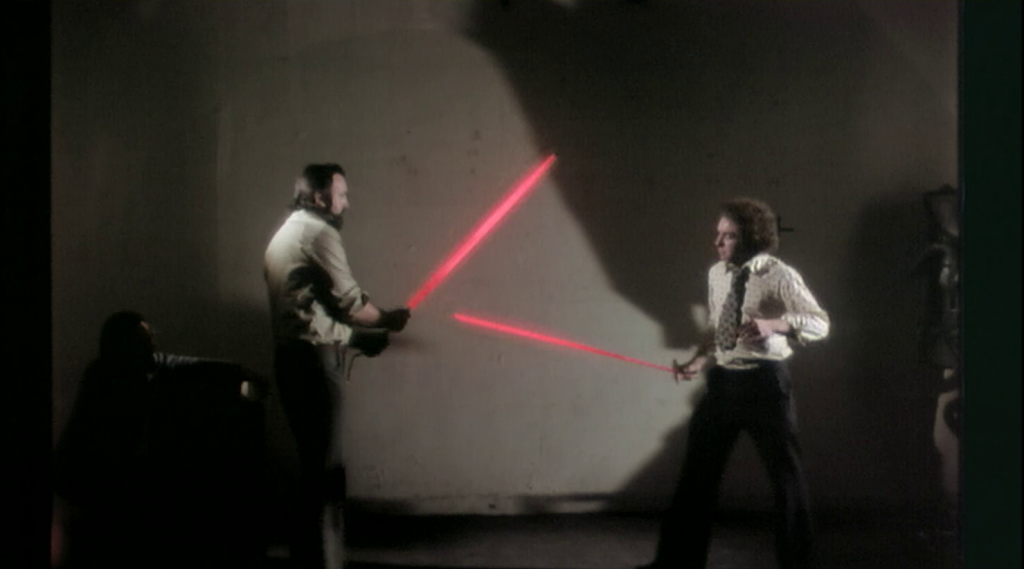
Annikin's younger brother Bink, only ten years old, is killed by the Sith warrior. Bink is described as having "dusty blond hair," so presumably he is the very earliest prototype of Jake Lloyd's nine-year-old Anakin Skywalker.
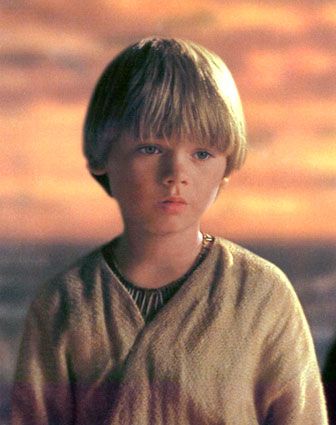
After they bury Deak, Annikin and his father Kane return after long voyaging to their home planet of Aquilae.
The script now shifts focus to Alderaan, a cloud city on the capital planet of the Galactic Empire. The image of the floating city in the clouds is obviously inspired by the Sky City of the Hawkmen from Flash Gordon.
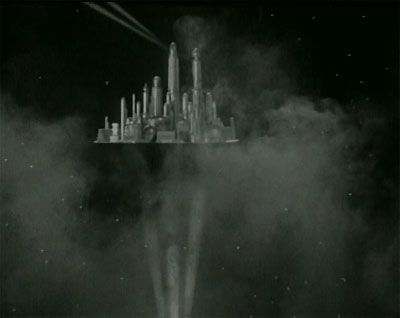
We are introduced to the city of Alderaan by a squad of two-man "stardestroyer" fighters flying overhead, as the evil Emperor makes a speech announcing the imminent invasion of Aquilae, in front of a massed army of troops in black uniforms.
The two-man craft would recur as the twin-pod cloud cars seen in Bespin in ESB. Presumably the early concept art for that craft, which made it triangular in shape like a full-size Star Destroyer, was influenced by the SW rough draft.
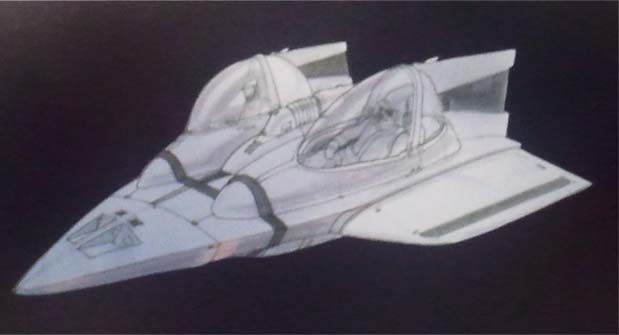
In fact, this scene on Alderaan is meant to recall the opening of Leni Riefenstahl's infamous Nazi propaganda film Triumph of the Will, in which Hitler descends from the clouds down to Nuremberg via airplane. The Emperor here is even described as having a Hitler-style mustache.
However, the Emperor's speech contains lines taken from the diary of John Adams. This serves to indicate how Lucas conceived the Empire: a vision of an America that has been corrupted and fallen from its once-noble ideals.
We also first encounter here another heroic character, observing the scene: Clieg Whitsun, "a tall, blond young man about twenty years old." Whitsun is something of a prototype of the final film's Han Solo. He fights alongside Annikin Starkiller in several battles, wielding a lasersword and laser pistol, but is distinguished from Annikin by not being a Jedi warrior.
Given Clieg Whitsun's blond hair, and the syllabic sound-similarity of his name to that of Flash Gordon, it's safe to say that Lucas intended Whitsun to physically resemble the Flash of Alex Raymond's comic strip.
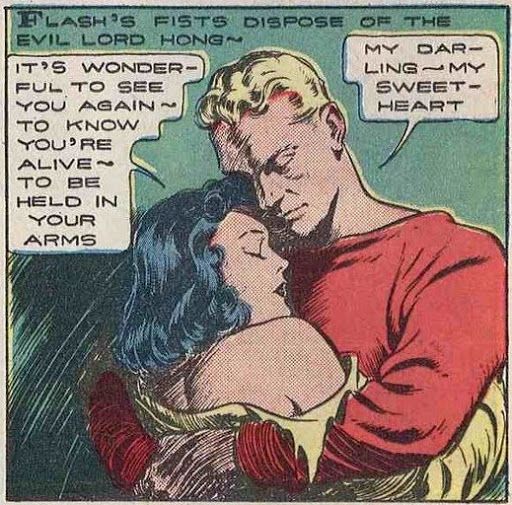
In later drafts, this property would be transferred to chief protagonist Luke Starkiller/Skywalker, who would no longer be black-haired. Han Solo, on the other hand, would have brown hair like Buck Rogers.
Over the course of the script, Clieg Whitsun accompanies the party of fleeing rebels until they are forced to abandon their damaged spaceship in orbit over Yavin; there he sacrifices his life to save Princess Leia.
Following the speech there is a scene where we see Imperial bureaucrats plotting the upcoming invasion of Aquilae. Chief among them is the newly appointed governor of the soon-to-be-conquered territory, Crispin Hoedaack, a Grand Moff Tarkin figure. Hoedaack is "a young, treacherous man with stone-cut angular features and piercing grey eyes." His henchman is Darth Vader, at this stage conceived only a "a tall, grim-looking general."
The Imperials' quarters are described as "white-on-white," an image of sterility and lifelessness that recurs from THX 1138.
On Aquilae, we are introduced to the commander of the Aquilaean King's armies, General Luke Skywalker. Skywalker is "a large man, apparently in his early sixties, but actually much older. Everyone senses the aura of power that radiates from this great warrior. Here is a leader: a JEDI general. He looks weary, but is still a magnificent looking warrior. His face, cracked and weathered by exotic climates, is set off by a close silver beard, and dark, penetrating eyes."
Unlike Kane and Annikin Starkiller, the Jedi warrior Luke Skywalker does not wear a samurai-esque topknot. Along with the color of his white hair, this connects him visually with Kambei Shimada, the gray-haired lead samurai in Seven Samurai, who shaves off his topknot at the beginning of the film as part of a disguise used to rescue a small child from a bandit.
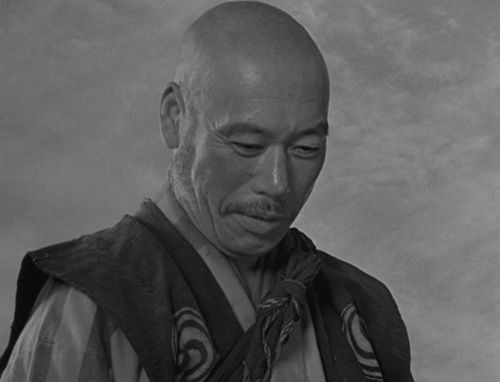
The short hair and beard of Luke Skywalker also visually connects him with Clint Eastwood's Man With No Name from Sergio Leone's films. Lucas stated that he envisioned the General character as "a seventy-year-old Clint Eastwood."
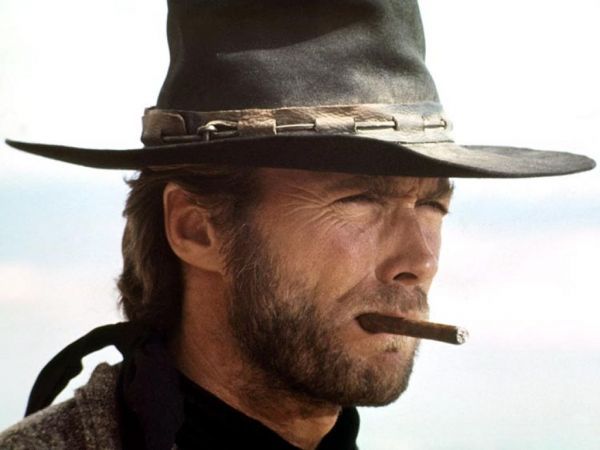
However, despite the Clint Eastwood connection, General Skywalker is presumably meant to be Japanese, as proclaimed by his dark eyes.
We also meet the King's fourteen-year-old daughter, Leia Aquilae. She is described as having "long auburn hair tied in braids" (i.e., red hair) and blue eyes.
The braids may already have been conceived as being like those of the final film's Leia, whose hairstyle recalls the Nordic braids of Queen Fria from Alex Raymond's Flash Gordon.
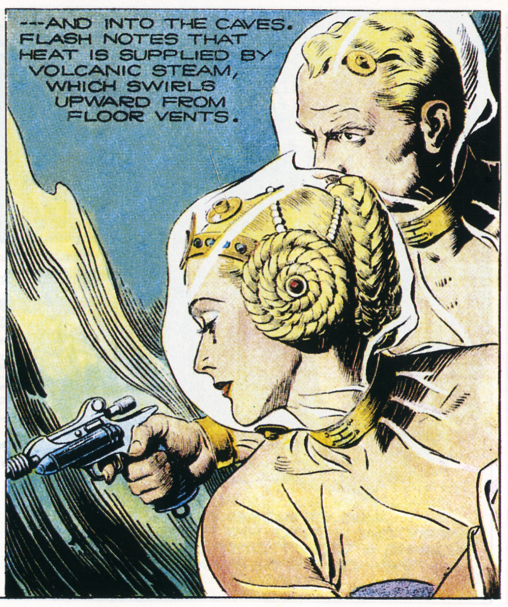
Leia's red hair comes from several sources: most notable are probably Princess Alia in Dune Messiah and Princess Aura (and Queen Desira, shown below) from Flash Gordon.
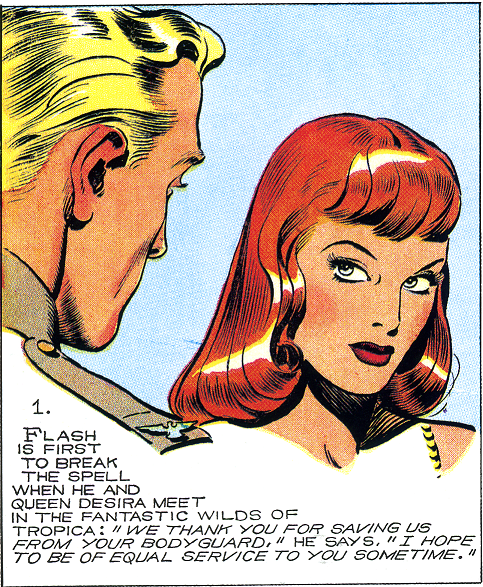
Leia's stated age (14) is taken from that of Princess Yuki, the heroine of Kurosawa's film The Hidden Fortress, who like Leia becomes a fugitive on the run from enemy troops.
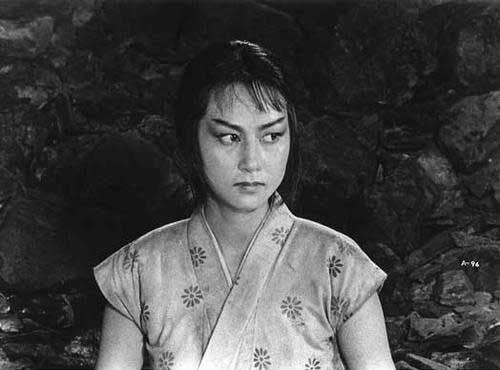
Lucas likely already imagined Leia as wearing the white dress she has in the final film.

As Ralph McQuarrie noted, this dress is in fact deliberately designed in order to resemble the robes of the Virgin Mary. Goddess symbolism permeates Leia's character throughout the various drafts of the film; she is the divinity whose cause the heroes fight for.
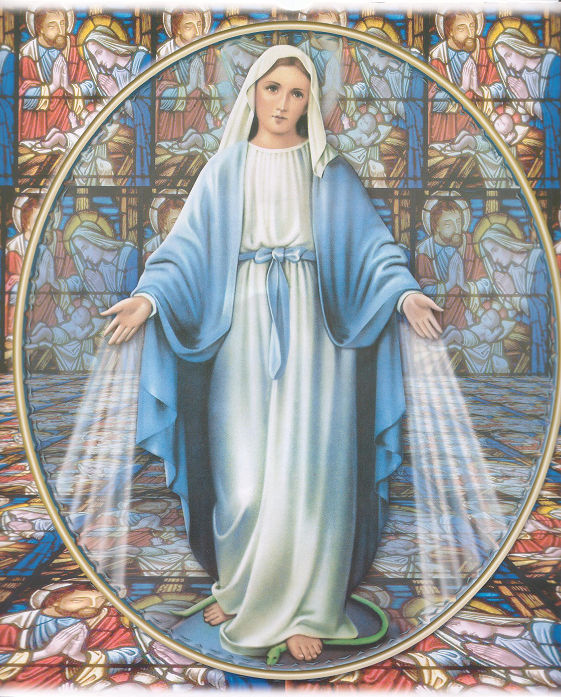
When the Starkillers arrive on Aquilae, Kane confesses to his old friend General Skywalker that he is dying and needs someone else to complete his son's Jedi training. This is because he is now almost entirely mechanical, as he dramatically reveals when he swings his left arm down on a table and android parts spill out.
This imagery is very probably borrowed from Star Trek. In the TOS episode "What Are Little Girls Made Of?" Kirk gets into a fight with Dr. Roger Korby, the long-lost and presumed-dead fiancé of Nurse Chapel. Kirk tears the skin off of Korby's left hand, revealing android circuitry beneath. Korby then explains that he preserved his consciousness in an android body when his original body died.

Later in the script, in the scene where Kane Starkiller dies, he opens his chest and reveals a panel of circuitry. Here Kane says of himself that there is "nothing left but my head and right arm." He is literally "more machine than man," just like Luke's father in the finished SW trilogy.
Annikin Starkiller is inducted into the service of the King of Aquilae. This entails him donning "the white uniform of the Aquilaean starforce." However, he still keeps the "Kessilian hair knot" (i.e., the samurai topknot).
Obviously the main protagonist of the film was already conceived by Lucas as wearing white, just like Luke Skywalker as ultimately portrayed on screen.
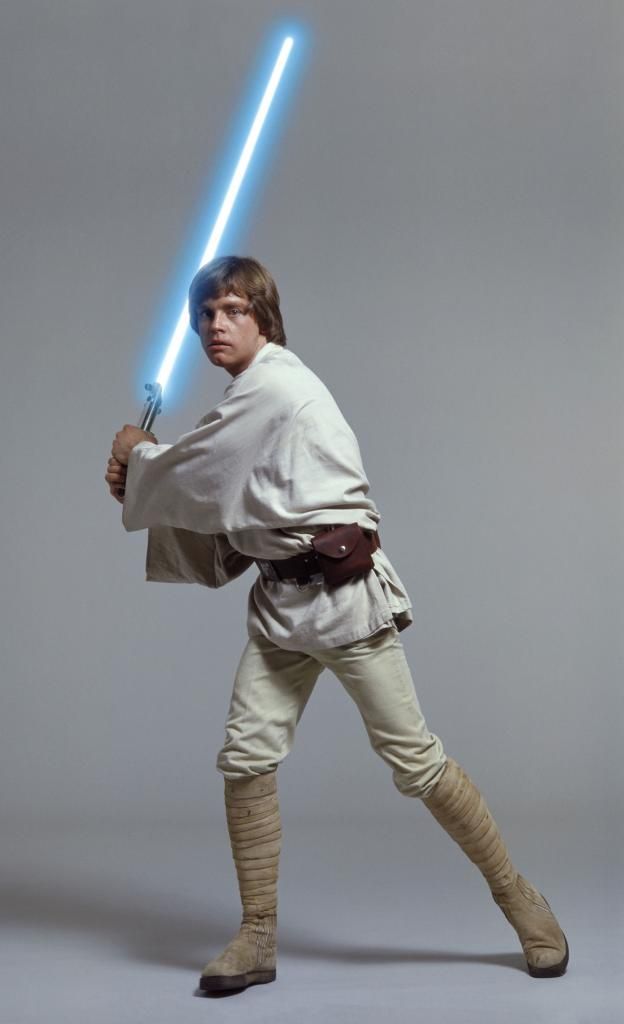
(This goes back to my point earlier about Leia likely already wearing a white hooded dress.)
Incidentally, in the revised rough draft (though not the initial version) the sky on Aquilae is described as green, a detail deriving from the desert planet of Altair IV seen in Forbidden Planet.
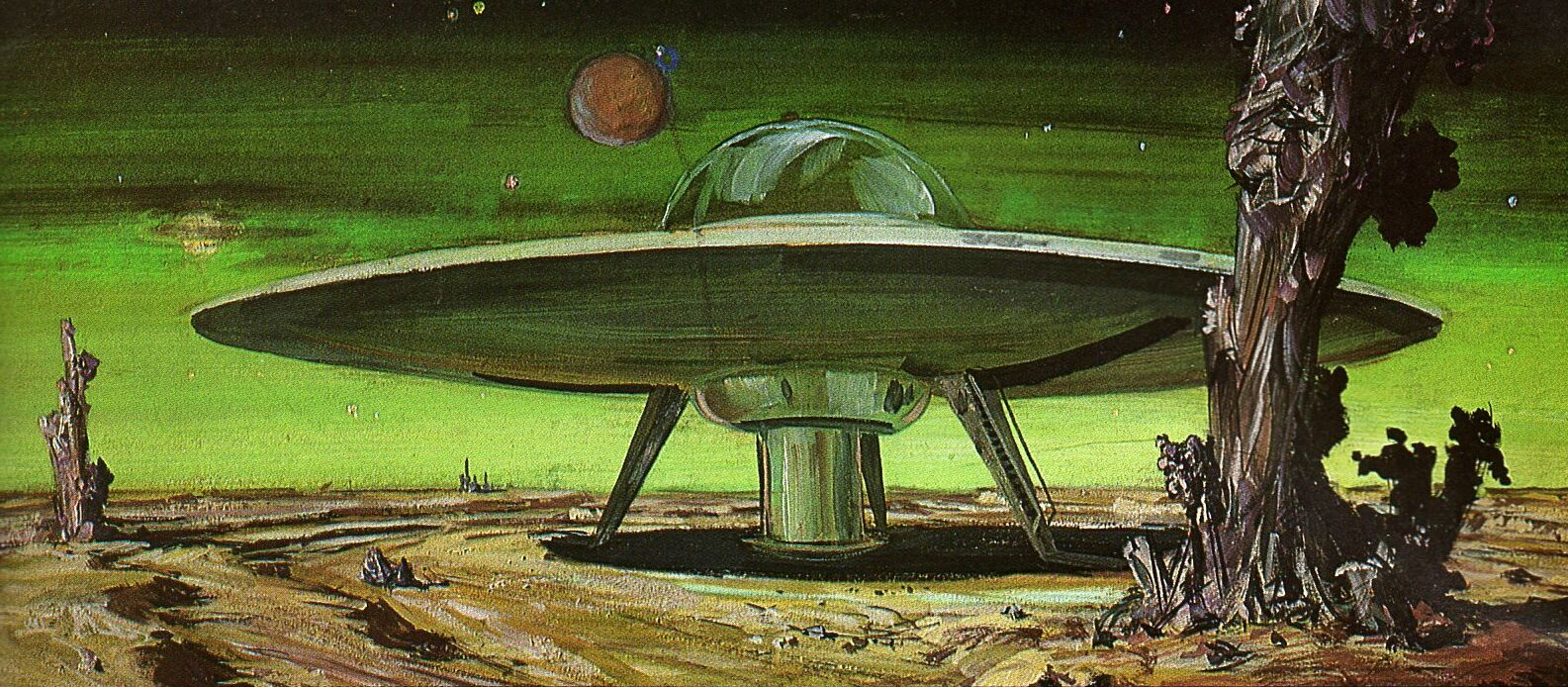
At one point, just before the Imperial invasion begins, Annikin has a sexual dalliance in a closet with a female aide of the King's military staff. This is obviously derived from a scene in Seven Samurai where Katsushiro has sex in a barn with Shino, a peasant girl with whom he has fallen in love, the night before the final battle to save the peasants' village.
Clieg Whitsun arrives on Aquilae with proof that the Empire is planning to invade. General Skywalker dispatches Annikin Starkiller to bring Princess Leia back safely from the Academy where she is attending school. Annikin notices that Leia has a handmaiden, Mina, who has dark hair but otherwise resembles the princess.
As you can probably guess, Mina is passed off as a decoy Princess, when Annikin puts Leia's royal medallion around her neck. This idea, which would recur in a more fleshed-out form in TPM, originates in The Hidden Fortress. In that film Toshiro Mifune's character (General Rokurota Makabe) sacrifices his own sister as a substitute for the outlawed Princess Yuki.
When the Imperials invade, Princess Leia's father, King Kayos, returning from a meeting with his legislature, is killed by a nuclear weapon. The use of atomic bombs, which would disappear from the SW universe after this draft, recalls their presence in Frank Herbert's Dune series.
Meanwhile, General Skywalker assembles the squadrons of Aquilae's starfighters for an attack on the planet-sized Imperial space fortress orbiting overhead.
The starfighters are described as "sleek" two-man starships. I would guess they resemble the silver Naboo spaceships of the prequels, whose aesthetic was borrowed from the 1930s Flash Gordon serials.
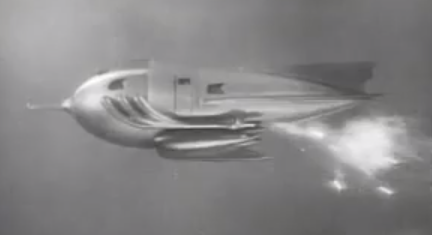
In fact, in the first draft of TPM, Lucas described the Naboo fighters as two-man craft, with Anakin and Padme piloting one together in the final battle.
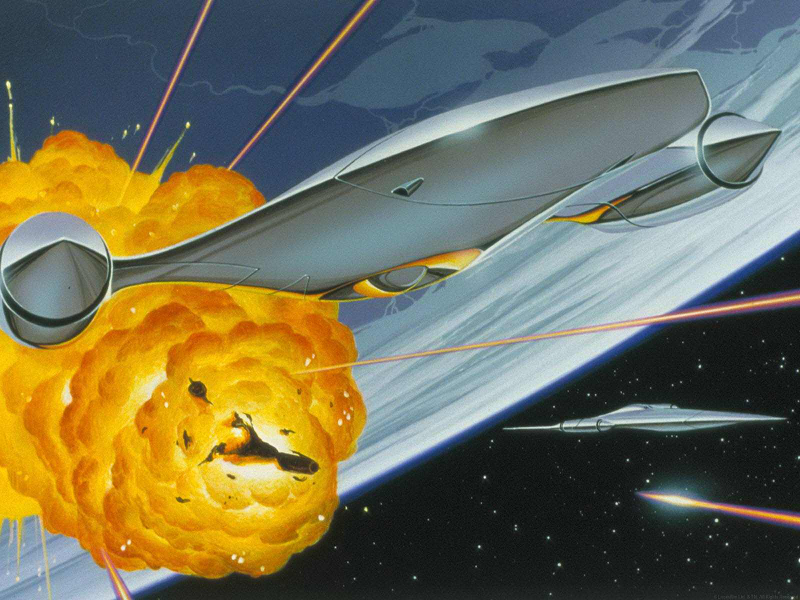
The pilots themselves wear white jumpsuits, keeping with Lucas's use of white clothes for the heroes and black for the villains, like in a Western. On their suits is the symbol of Aquilae, said to be the "distinctive circle-and-cross medallion."
This probably refers to the alchemical symbol for Venus, which represents femininity, fertility, and love (as opposed to war, the domain of Mars--represented by the Imperials). The Venus symbol also bears a strong resemblance to the ancient Egyptian ankh, the symbol of life and rebirth.
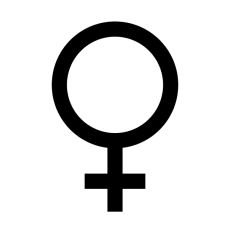
During the space battle, two worker robots on the Imperial space station, frightened by the damage occurring, eject in a lifepod to the surface of Aquilae below, where they are picked up by Annikin Starkiller. These are the rough draft's versions of R2-D2 and C-3PO.
Threepio is described as a "chrome android." The chrome color refers to the appearance of the robot Maria in Metropolis, as it looks on black-and-white film. In later drafts Lucas would describe Threepio as "bronze" instead, this time referencing the color the Maria robot was actually painted on the set of Metropolis.
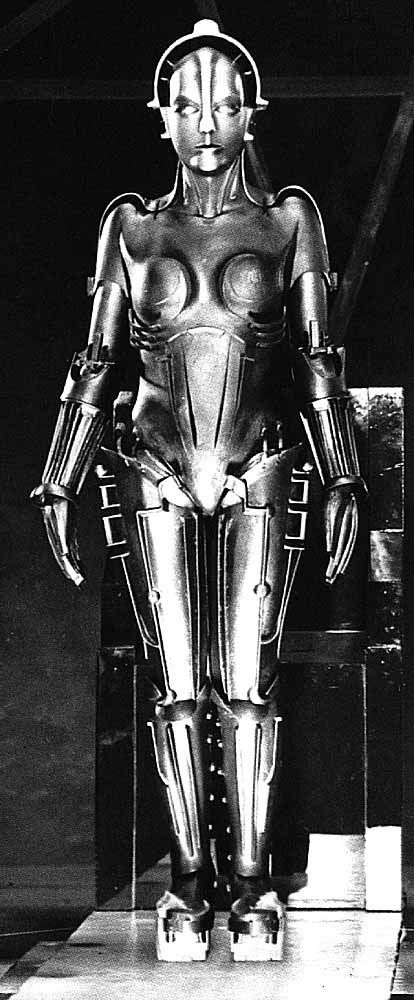
R2-D2, on the other hand is a "short (three feet) claw-armed tri-pod" with a "radar eye."
Now, Ralph McQuarrie basically designed the final film's Artoo from the ground up. McQuarrie's idea was that, since the obvious inspiration for the later Artoo was the diminutive, non-speaking worker robots in Silent Running--which were rectangular, like a Gonk droid--he'd design something cylindrical instead, just to be different.
However, unlike the Silent Running-inspired Artoo of later drafts, the rough draft's Artwo-Detwo speaks perfect English. And Ralph McQuarrie of course hadn't come along yet.
I actually believe the inspiration for the original appearance of Artwo in the rough draft was the Martian tripods (or "fighting machines") from H.G. Wells' novel The War of the Worlds.
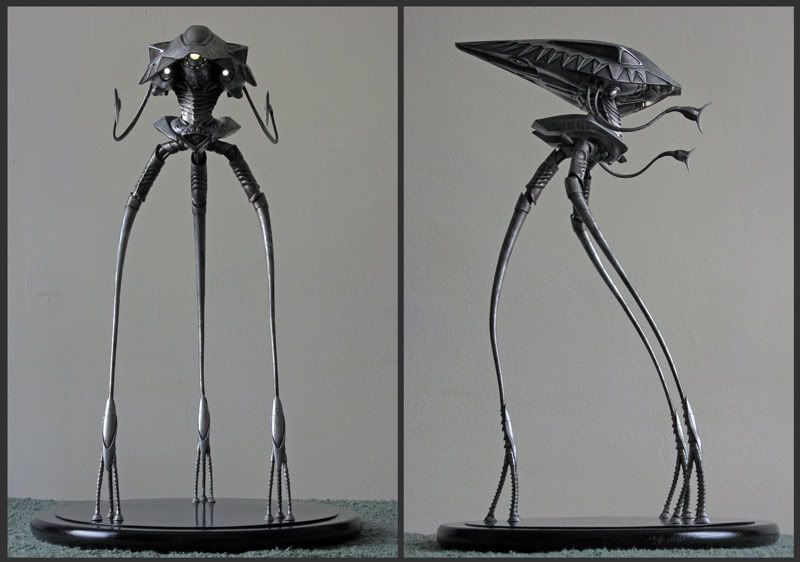
Like Artwo, Wells' tripods have three legs, as well as numerous flexible arms with which to grab objects. Their "heads" also usually are depicted with a single giant "eye," actually a lens from which they project a lethal Martian heat ray.
If Lucas indeed scaled down the Martian tripods of Wells' book to create a believable non-anthropomorphic construction robot, it would be of a piece with what he did with C-3PO. After all, the robot in Metropolis was presented as a villain. In both cases, we glimpse a recurring theme of the rough draft: the monsters of older SF are recast by Lucas as heroes.
With the King dead, the nobles of Aquilae decide to capitulate to the Empire. Still defiant, General Skywalker begins making plans for the escape of the royal family from the invading Imperial army.
In order to secure the support of "the chrome companies" for Leia's restoration to the throne of Aquilae, Skywalker is entrusted with capsules containing the DNA and recorded memories of 33 prominent Aquilaean scientists. These samples, suitable for creating clones, will be turned over to the chrome companies as the price of buying an army to restore the planet's freedom.
This plot element virtually disappears after this point in the script, as the eventual destruction of the Imperial army is brought about not by the chrome companies' hired forces, but by an army of Wookees. However, the prominence of cloning and corporate guilds as elements in this early script shows clear echoes of Dune.
The party of fleeing rebels consists of General Skywalker, Annikin Starkiller, Princess Leia, Clieg Whitsun, the droids, and Leia's two younger brothers. Kane Starkiller is not present, as he is already in the spaceport of Gordon, arranging for transport off-planet.
The rebels leave behind the underground command chamber from which Skywalker had run the war, and the complex (in which Leia's mother the Queen has remained) is then blown up by an atomic bomb. This is done deliberately, so as to prevent it falling into Imperial hands.
This is modeled once again on The Hidden Fortress, where, after the party escorting the fleeing princess leaves behind their hidden mountain refuge, the enemy surrounds it. At that point the fortress's remaining defenders set it ablaze and perish rather than fall into unfriendly hands.
The "black knight of the Sith" assigned by the Empire to hunt down the Aquilaean royal family is Prince Valorum, who is "dressed in the fascist black and chrome uniform of the legendary Sith One Hundred."
Valorum's uniform--black against the white walls of Imperial architecture--is once again borrowed from the imagery of THX 1138.
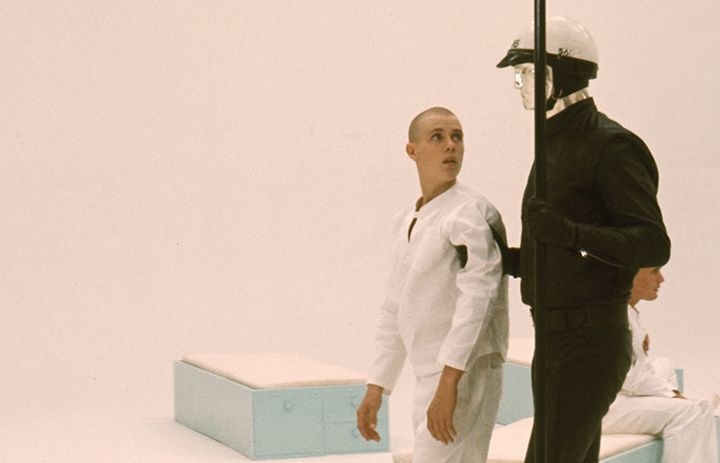
As for what Valorum himself looks like, I suspect Lucas wanted the Jedi and Sith knights to be a racially diverse group. As such, Valorum would quite possibly be cast as an African-American, after the fashion of Mace Windu in the prequels.
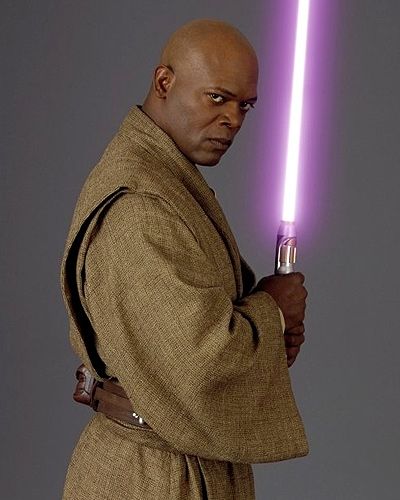
Both Valorum and Mace Windu are honorable warriors who are nonetheless strict in temperament, overly bound by reverence for rules. Valorum mends his ways and becomes a hero, but Mace Windu fails to realize his errors, which leads to his death.
This also would lead to a racially diverse group of heroes being presented in the film's celebratory final scene. Along with the various non-human creatures, there would be Annikin and Leia, General Skywalker, and the reformed Prince Valorum--human heroes from three distinct racial backgrounds who have come together in harmony to defeat the Empire.
The idea of portraying Valorum as black would also explain the casting of James Earl Jones as the voice of Valorum's successor character in the finished film of 1977: Darth Vader (who of course was not yet Luke Skywalker's father).
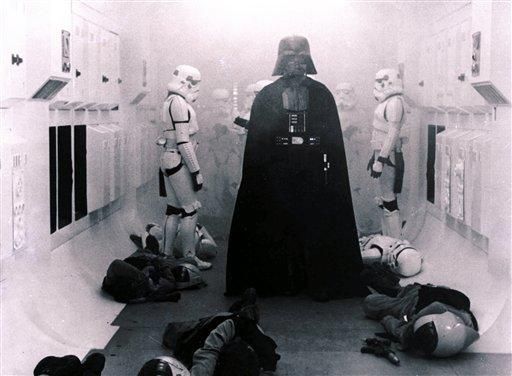
Once the heroes reach the city of Gordon (named for Flash), we get an early version of the cantina scene, in which General Skywalker is bothered while having a drink, and proceeds to cut an alien's arm off. The dialogue in this version is even more nakedly borrowed from Kurosawa's Yojimbo than in the final film.
When we re-encounter Kane Starkiller, he introduces us to his contact with the anti-Imperial underground, Han Solo. Han is "a huge, green skinned monster with no nose and large gills." In other words, he is a swamp creature, modeled on the Creature from the Black Lagoon. Here, too, Lucas has recast an earlier film's monster as one of his heroes.

Han Solo's physiology also recalls the gigantic Green Martians from Edgar Rice Burroughs' Barsoom series, several of whom the hero John Carter befriends over the course of the books.
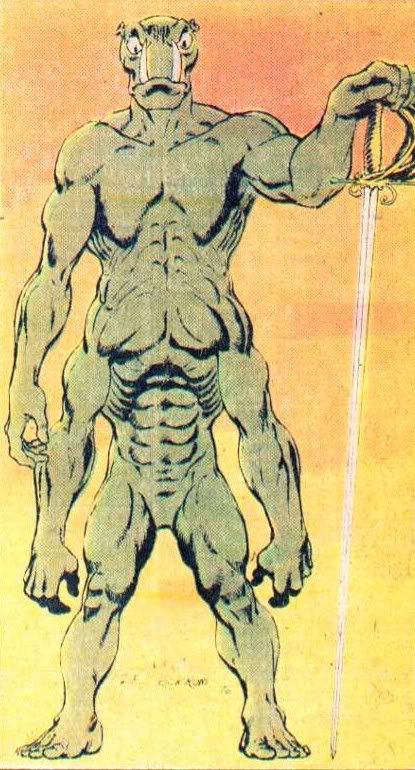
As the monstrous sidekick of the human heroes, the rough draft's Han Solo is the forerunner of the final film's Chewbacca. However, unlike Chewbacca, here Han Solo speaks perfect English.
The swamp-creature Han Solo of the rough draft would later provide inspiration for Yoda (who is shrunk down to diminutive size, just as the Ewoks of ROTJ are smaller versions of the SW rough draft's Wookees); as well as Jar Jar Binks, who was originally imagined as green.
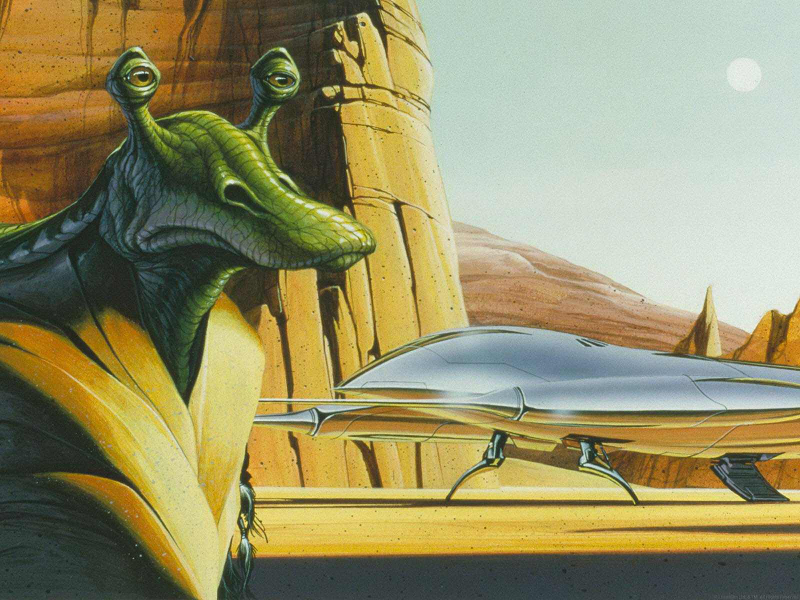
The heroes need to transport Leia's two younger brothers in small cryogenic chambers, so they can be moved easily and without fuss. However, there are not enough power units available in the Imperial-controlled city to power both of their cryo-packs.
Kane Starkiller solves this issue by opening a panel in his chest and ripping the power pack out of his mechanical innards. He dies shortly afterward, making the ultimate sacrifice for the greater good.
The image of Kane opening his chest to reveal a panel of circuitry likely has roots in another Star Trek TOS episode, "Mudd's Women," where we see an android who does the same thing.
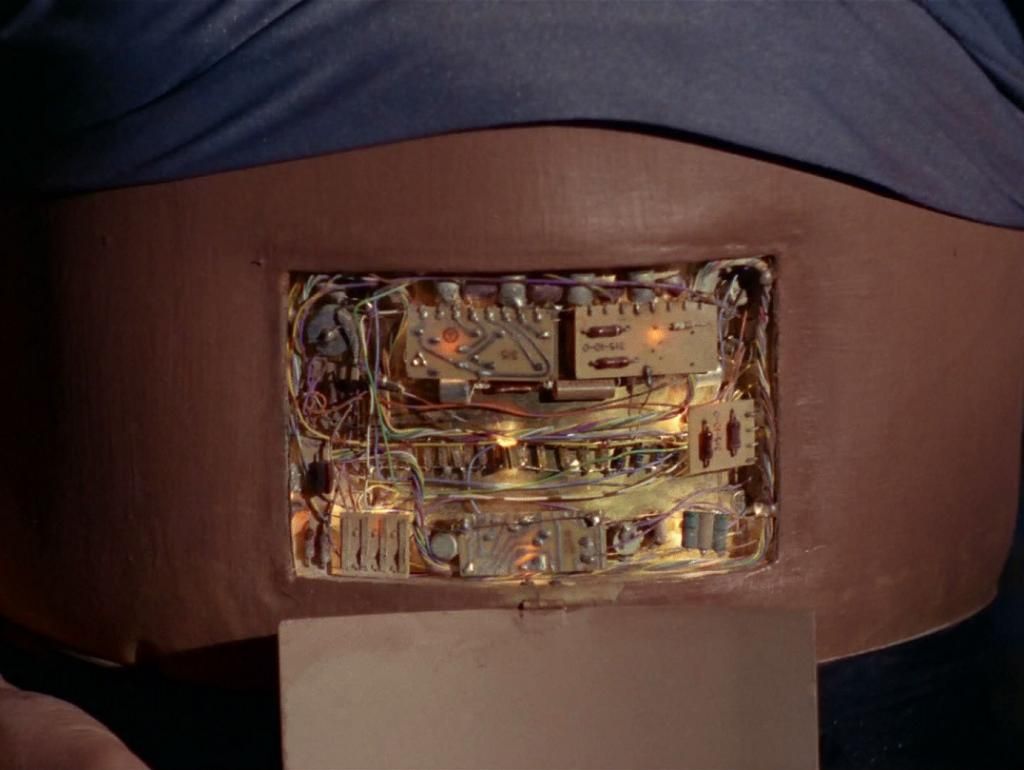
Prince Valorum lays a trap for the heroes at the spaceport, but they escape and take off in a military spaceship. Valorum's failure recalls the humiliation of his model from The Hidden Fortress, General Hyoe Tadokoro, who fails to capture Princess Yuki and General Makabe.
The spaceport is imagined as an underground facility, and the spaceships are protected by silo covers, like Cold War missiles. The heroes' ship blasts through this outer cover, sustaining light damage in the process.
As the stolen spaceship travels onward, tracked by Imperial fighters, Leia confesses that she loves Annikin. Annikin realizes that he, too, is in love with her.
When Imperial fighters catch up with their spaceship, Annikin and Whitsun (the equivalents of the final film's Luke and Han) put on spacesuits and man the laser turrets to destroy the approaching craft.
The spacesuits prove useful when Annikin's turret is blasted open by laser fire, and he is thrown into space, kept from floating away only by a single thin tether. Artwo-Detwo goes out into space and helps Annikin back into the craft.
This scene is borrowed from a similar one in Destination Moon, a 1950 film about a fictional Moon expedition, where one character is nearly lost during a spacewalk outside the rocketship and another must come to his rescue.
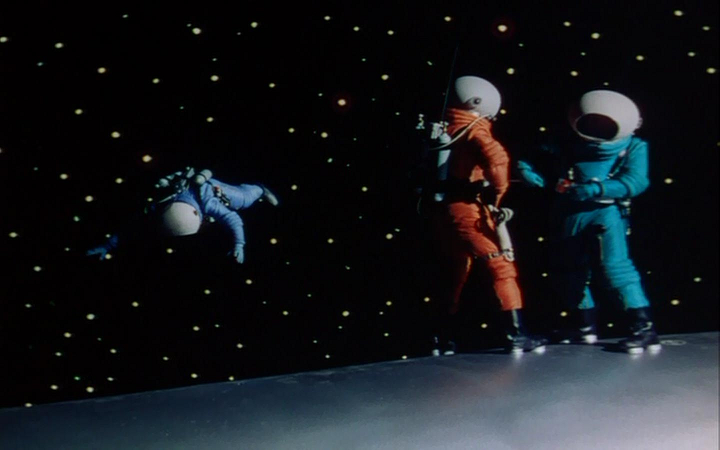
To evade Imperial pursuit, the general turns the starship into an asteroid field. However, the ship is so severely damaged by the asteroids that the heroes are forced to use the lifepods to bail out, heading for the surface of the nearby planet Yavin.
It is at this point that Clieg Whitsun sacrifices his life. When Princess Leia's lifepod fails to eject, Whitsun reconnects the damaged cables that control it, staying behind in the dying spaceship as the others bail out.
The lifepods come down at various points on the surface of the jungle planet Yavin; Annikin and Leia are each separated from the others.
Thrown out of his crashed lifepod, Annikin lies senseless in a tree when a disgusting insect creature begins crawling over him. His eyes open, but he lies still and silent for several long moments, until suddenly he grabs the creature in one swift motion and smashes it dead.
This scene appears to be borrowed from how James Bond deals with a deadly spider in Dr. No. The same scene would also provide the inspiration for the moment in Raiders of the Lost Ark where Indy deals calmly with a pack of large spiders.
Having killed the deadly insect creature, Annikin reunites with Artwo-Detwo and begins looking for Princess Leia. Meanwhile, the others revive Leia's two brothers from cryosleep, and begin searching for the rest of their party.
Finding Leia's lifepod empty, Annikin continues on until he finds a group of "scruffy alien trappers" sitting around a stove. The trappers have captured several Wookees, described as "huge grey and furry beasts," who are suspended by their ankles from tree branches.
The imagery of the Wookees--enormous furry ape-like creatures--appears to lean heavily on King Kong. However, the detail of their fur being gray seems to derive from the monstrous giant gray apes that appear as threats in several of Robert E. Howard's Conan stories, such as The Servants of Bit-Yakin and The Hour of the Dragon. In either case, the effect is that once again Lucas has turned a villainous monster into a heroic figure.
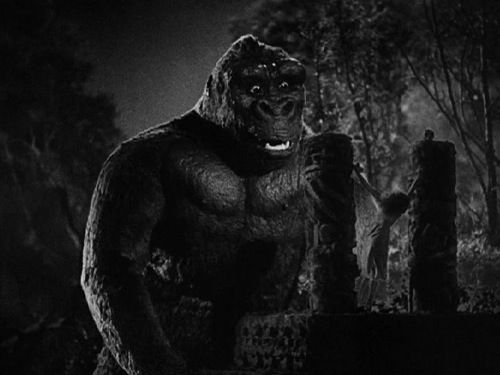
As Starkiller watches, one of the trappers enters his vehicle, then returns with Princess Leia, held "unconscious and half naked" over his head. Clearly he intends to rape her. Starkiller is so enraged by the sight of the partially nude Leia that he immediately leaps among the trappers and begins cutting them down.
Given that Lucas infamously told Carrie Fisher that "there's no underwear in space," I suspect that having Leia show off her underclothes wasn't what he had in mind here. Instead Lucas probably imagined Leia Aquilae as having had her top ripped off, leaving her bare-breasted like the heroine in a Conan story.
Presumably from this point forward in the film, Leia would be wearing only a tattered white skirt, held up by a belt. Along with her missing top, her braids would likely be undone, and the lower few inches of her skirt would be gone too--as well as her boots, leaving her barefoot.
We can be fairly certain that Lucas intended some sort of clothing damage here, because as with other images from the rough draft, the idea of a heroine in a white outfit suffering a wardrobe malfunction reappears in his later work.
In Raiders of the Lost Ark, Marion Ravenwood loses her shoes and the lower portion of her white dress when she is trapped in the Well of Souls, and in AOTC, Padme loses the midriff and one arm of her white outfit during the arena sequence. Apparently both of these instances are milder reflections of the original, more extreme clothing damage suffered by the Leia Aquilae of the SW 1974 rough draft.
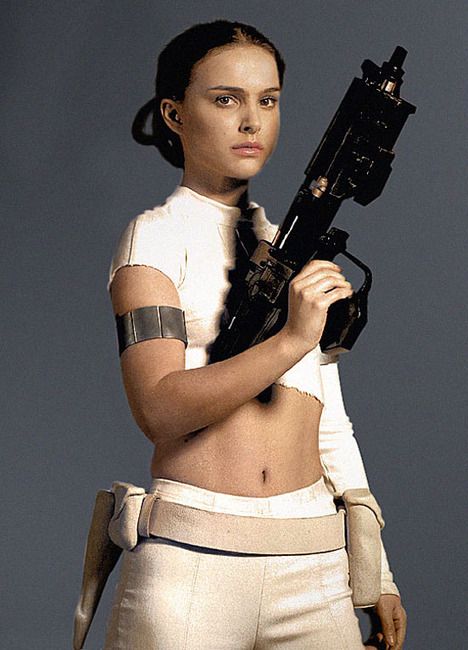
It's also worth noting in this regard that, unlike Lucas's later, more family-friendly films, THX 1138 featured onscreen nudity.
Starkiller manages to cut down several of the trappers, but one of them escapes in his vehicle with Princess Leia, and Annikin is knocked unconscious. However, in the chaos, several of the Wookees escape, and they take Annikin back to their village.
In the Wookee village, Annikin finds himself thrust into ritual combat with a Wookee warrior, Jommillia. Annikin holds his own in the fight until Auzituck, chief of the Sawa tribe of the Wookees, calls a halt to the affair. A great celebration with bonfires is put on to celebrate Starkiller's bravery, much like that seen in the ending of ROTJ.
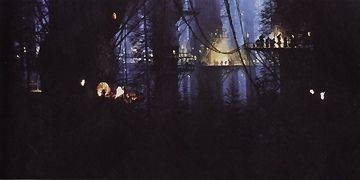
Annikin takes his leave of the Wookees, but one of the Wookees whose life he saved--Prince Chewbacca, son of Chief Auzituck--follows him in order to discharge his debt.
Meanwhile, the other heroes have met Owen Lars, a human settler, and his wife Beru. Han Solo and General Skywalker leave Leia's brothers in their care while they search for Annikin.
Annikin, Artwo, and Chewbacca at last meet up with General Skywalker and Han Solo. Realizing that Leia has been taken to a nearby Imperial outpost, they make a plan to use the Wookees--who hate the Empire and its trappers--to lead an assault on the base.
As an Imperial "air tank" makes a patrol through the jungle, it is ambushed by a squadron of Wookees, holding reflective metal shields that jam its radar. Starkiller and Skywalker overpower the occupants of the hover-tank and get in. Leading a column of Wookee soldiers, they use the captured tank to attack the feeble defenses of the Imperial base.
This scene would provide the inspiration for both the forest battle with AT-ST walkers seen in ROTJ, and the floating Trade Federation tanks seen in TPM.
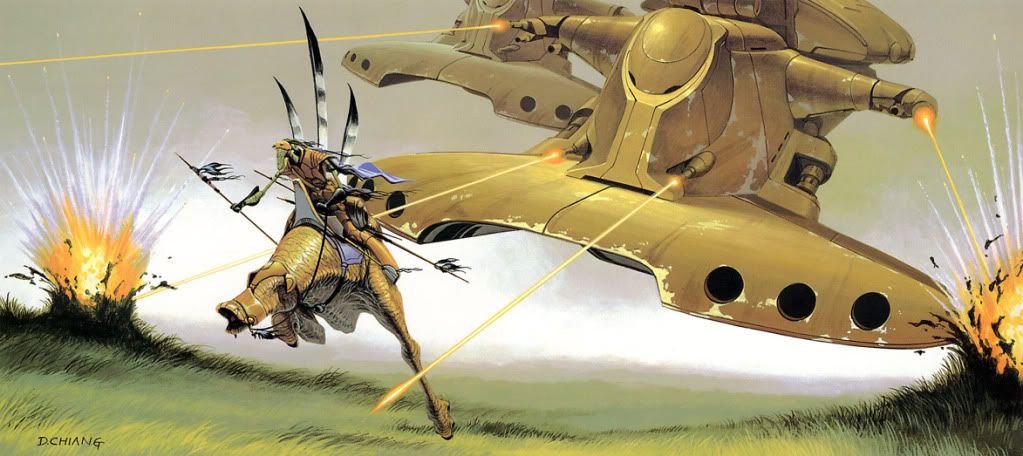
The attack is successful, leaving the rebels and Wookees in command of the outpost. However, they discover that Leia has been taken by ship back to Aquilae.
Meanwhile, a squadron of stormtroopers has raided Owen Lars' house, capturing Leia's brothers. Fortunately, the stormtroopers are intercepted by a patrol of Wookees. The boys and the Lars family are safely rescued.
While Han Solo arranges for an uprising on Aquilae via the rebel underground, General Skywalker begins to train the Wookees in spaceflight, using the captured Imperial starfighters of the outpost. The fighters themselves are four-man craft, described thus: "Bizarre and colorful Wookee designs have been painted across the large deflector fins of the spacecraft. Some designs transform the ships into huge and grotesque animals, while others create unique mosaic patterns."
The description of the patterns painted on the fighters by the Wookees is highly reminiscent of the dazzle-camouflage color schemes used on spaceships in the SF paintings of Chris Foss.
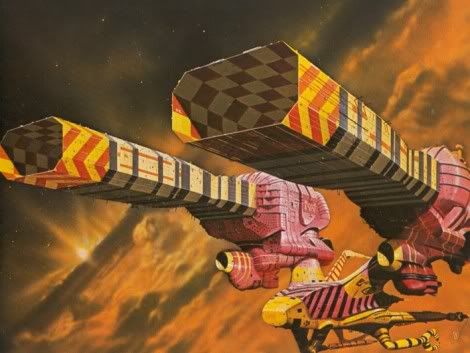
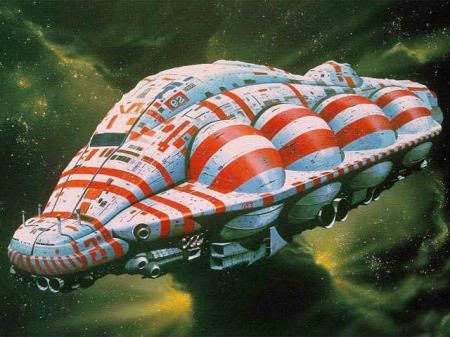
Meanwhile, Annikin Starkiller disguises himself as an Imperial pilot and sets out, accompanied only by Artwo, to infiltrate the space fortress over Aquilae and rescue Princess Leia.
Aboard the space station, Darth Vader interrogates Leia, using electric shocks in an attempt to break her will. Ultimately, however, Vader places his hopes in "doctors from Alderaan" who will operate on Leia to destroy her mind and render her pliant.
Starkiller arrives aboard the space station and steals a stormtrooper's uniform. However, he is detected and captured. Prince Valorum, now reduced to the rank of a stormtrooper after his earlier failure to capture the heroes, laments to Starkiller that he has come to a place where a warrior's honor is meaningless.
The ship bearing the doctors from Alderaan finally arrives, and Annikin is escorted to the airlock to meet it. Suddenly, however, Valorum cuts down his guards and frees Annikin. Valorum has realized the error of his ways; the Empire has no honor, and he must help the Jedi instead.
Valorum and Annikin free Leia as she is being led to the ship. The trio begin battling their way out of the Imperial space fortress.
Since Leia is apparently barefoot, bare-breasted, and carrying a gun in this scene, her costume here invokes more goddess symbolism: that of Liberty in Eugene Delacroix's famous French revolutionary painting Liberty Leading the People. Leia as the goddess Liberty suggests the necessity of revolution against the evil Empire; her companions, Valorum and Starkiller, represent those who fight for Liberty's cause.
As a bare-breasted woman in the middle of a labyrinth of white Imperial corridors, Leia also represents everything life-affirming that is lacking in the sterility of the Imperial ideology.
Outside the space fortress, the Wookees in their fighter squadrons arrive and begin their attack.
Needing an escape route from the fortress, the trio of heroes plunge down a garbage chute into a trash compactor. General Vader, seeing them on the security monitors, activates the garbage compactor. However, the Wookee fighters knock out the power to the compactor, and the heroes are saved.
As the space station reels under the Wookee assault, the trio run for the lifepods. At one point they have to hold on for their lives when a hole is blasted in the corridor, leading into open space. Finally they reach the lifepods. Valorum and Artwo take one pod, Starkiller and the princess the other.
The pods eject. The Wookees' assault on the space station's power conduits has begun a chain reaction. General Vader advises Governor Hoedaack to evacuate, but Hoedaack refuses to do so. The space station explodes. In their lifepod, Annikin and Leia kiss passionately.
In the film's final scene, we see all the heroes gathered in Leia's throne room on Aquilae: Annikin Starkiller, General Skywalker, Prince Valorum, the green-skinned Han Solo, and the Wookees. Leia is in the center of it all, seated on a throne, resplendent as Queen of Aquilae.
The equivalent scene in The Hidden Fortress has Princess Yuki wearing white geisha makeup, symbolically representing her as a goddess figure. Quite possibly the idea to do the same with Leia was already present in Lucas's mind. That impulse would finally be realized on screen with Queen Amidala in TPM.
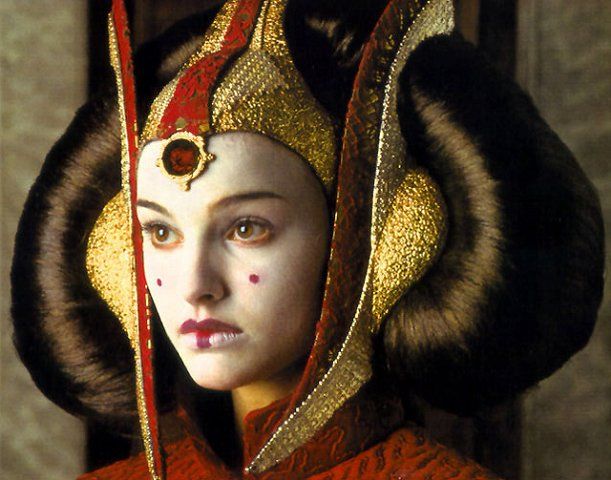
Leia rewards the two droids, R2-D2 and C-3PO, announcing that they will serve Annikin Starkiller, the new "Lord Protector of Aquilae" (i.e., Leia's consort on the throne).
With that scene, the rough draft ends.
---
As we can see, a LOT of the images from this rough draft would recur elsewhere in Lucas' later work. It's actually quite surprising how visually fleshed-out this draft was in Lucas's head.
Thoughts?
“That Darth Vader, man. Sure does love eating Jedi.”
It's interesting how the Sith have honor while the Empire doesn't. This is the complete opposite of the Starscream-like Sith that we know today.
The way the rough draft is presented, the Jedi and Sith are both fearsome warriors. What makes the Sith dishonorable is that they serve the totalitarian Empire. A Sith who switches his allegiance to the cause of liberty is functionally equivalent to a Jedi.
Mind you, this is because telekinetic Force powers hadn't been invented yet by Lucas. Jedi and Sith are fierce fighters and cunning tacticians, but not superhumans. So there's no element of corrupting black magic attached to the Sith yet--that came later.
Once the Force became akin to a superpower, with light and dark sides akin to white and black magic, the Sith became irredeemably evil. This is reflected in their grotesque appearance: from the second draft onward, Lucas wanted the Sith knights to "look like Linda Blair in The Exorcist."
Also, the Sith in the rough draft are not stated to be an ancient organization like the Jedi. In fact, they may very well be a relatively new sect, created by the Empire in order to hunt down the Jedi.
In the backstory of the rough draft, the Jedi Order rebelled against the corrupt Empire, only for the Sith to crush the rebellion and hunt down the survivors. It's quite possible that the ranks of the Sith were filled by Jedi who remained loyal to the Empire.
“That Darth Vader, man. Sure does love eating Jedi.”
ATMachine said:
The way the rough draft is presented, the Jedi and Sith are both fearsome warriors. What makes the Sith dishonorable is that they serve the totalitarian Empire. A Sith who switches his allegiance to the cause of liberty is functionally equivalent to a Jedi.
Mind you, this is because telekinetic Force powers hadn't been invented yet by Lucas. Jedi and Sith are fierce fighters and cunning tacticians, but not superhumans. So there's no element of corrupting black magic attached to the Sith yet--that came later.
Once the Force became akin to a superpower, with light and dark sides akin to white and black magic, the Sith became irredeemably evil. This is reflected in their grotesque appearance: from the second draft onward, Lucas wanted the Sith knights to "look like Linda Blair in The Exorcist."
Also, the Sith in the rough draft are not stated to be an ancient organization like the Jedi. In fact, they may very well be a relatively new sect, created by the Empire in order to hunt down the Jedi.
In the backstory of the rough draft, the Jedi Order rebelled against the corrupt Empire, only for the Sith to crush the rebellion and hunt down the survivors. It's quite possible that the ranks of the Sith were filled by Jedi who remained loyal to the Empire.
Brings to mind the Inquisitor from Rebels. Inquisitors didn't exist before the Empire and might not have any desire to rule.
I also find it interesting that throughout the OOT, Vader has qualities of a knight while Palpatine does not. Compare Vader lightsaber dueling his opponents to Palpatine blasting lightning upon an unarmed opponent.
I love reading about this behind the scenes material and inspiration. Most of Lucas's inspiration seems to come from early American Sci-fi and Japanese films, so it's kind of interesting how devoid of Asian acting talent Star Wars has been. It seems like a no-brainer to cast someone like Hiroyuki Sanada as a Jedi in the new films.
You probably don’t recognize me because of the red arm.
Episode 9 Rewrite, The Starlight Project (Released!) and Terminator Ultimatum,
Here's a little addendum concerning the later drafts:
I think I figured out why Ralph McQuarrie drew Luke and Leia as looking so identical in his SW 1977 concept art from the third draft onward. And it's not because Lucas already imagined Luke and Leia as brother and sister.
First, go back to this famous McQuarrie painting from the SW second draft, from the point in time where Luke was a girl:
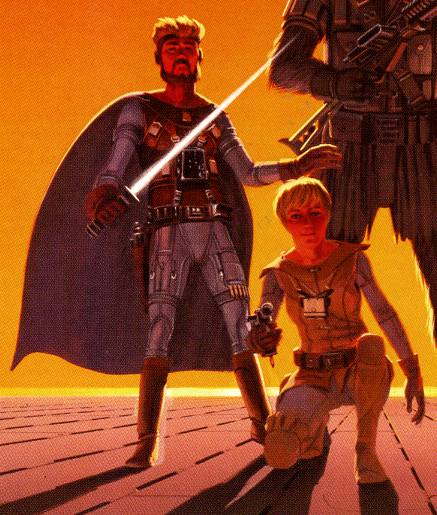
Look how McQuarrie has painted both girl-Luke and Han Solo. Specifically, they're both blond. The only difference is that Han has a red beard.
Now we know that Han is definitely not Luke's brother in this version; that role belongs to Deak Starkiller. So what's going on?
I suspect Lucas instructed McQuarrie to draw the two principal leads of the film as looking almost exactly alike, to show that they were soul mates. Like, and yet unlike (as indicated by Han's beard). Girl-Luke is the young innocent, the naive farm girl heading out into the wider world for the first time. Her love interest, Han Solo, is an experienced smuggler, a confident and self-assured man who knows the galaxy. Yet each of them has something of the other inside as well; yin and yang. Luke will become a bold Jedi warrior, whereas Han runs away from the Imperial might of the Death Star. Thus they are perfectly matched, and a natural romantic pair.
Ralph McQuarrie presumably transferred this symbolism intact to his later concept art based on the third draft. There the two lovers assumed the form of the naive farmboy, Luke Starkiller, and the confident leader of soldiers, Princess Leia. But they were still intended to end up together romantically, so they were drawn to look very much alike--like two halves of one whole being.
McQuarrie seems to have imagined both Luke and Leia as blonde by default, and both with short hair. However, when he drew the two of them together, he would usually alter the hair color of one of them slightly, making it light brown instead. This has the effect of making the two characters look not quite alike--just like Han Solo's red beard did in his character design from the second draft. (Alternatively, in his painting of the medal ceremony at the end of the film, McQuarrie gave Leia long blonde hair to contrast with Luke's shorter bowl cut.)
“That Darth Vader, man. Sure does love eating Jedi.”
Also, I think I've mentioned it before, but in the SW third draft Leia is described as "bloody and mutilated" from Imperial torture when Luke and Han find her.
Given Lucas's love of Kurosawa films, this was probably imagined as a reference to the nasty black eye that we see on Toshiro Mifune when he's beaten up in Yojimbo (as well as on Clint Eastwood in Sergio Leone's remake, A Fistful of Dollars).
Which basically means Leia would be walking around with an eye swollen shut for the whole second half of the movie. Gruesome, but on both a literal and symbolic level it would instantly establish Leia as the toughest of the film's three heroes.
“That Darth Vader, man. Sure does love eating Jedi.”
There is one rather alarming subtext in the SW 1974 rough draft that reoccurs elsewhere in Lucas' work, which I haven't mentioned yet. Namely, sexual assault happening to the principal heroine.
The scene in the rough draft where Leia reappears on Yavin, having been stripped by the jungle trappers, raises a disturbing question. Did the trappers rape her? The answer: Very likely yes, but it's deliberately never stated outright.
Consider: When Lawrence Kasdan wrote his first pass at the ROTJ script, he included a scene where the captured Leia asks Threepio what fate Jabba will deal out to her. "Death?" Threepio responds: "Worse." Kasdan is alluding here to the phrase "a fate worse than death," the old euphemism for rape. So this is basically an in-your-face announcement that Leia is about to be sexually assaulted.
That was undoubtedly too explicit for Lucas to countenance. So instead, when Lucas revised Kasdan's script himself, he changed the dialogue here. Now Leia tells Lando, "I'll be all right." Lando responds, "I'm not so sure."
With this new dialogue, Lucas creates ambiguity. Is Leia in danger or not? The intent, of course, is to play to two different audiences. Kids will think only of mortal danger, and not grasp the subtext of the scene. Adults, however, will understand exactly what is being implied here. The dark implications of the Jabba scenes have not changed--only the extent of their verbalized expression on screen.
In a similar vein, nothing in the SW rough draft is ever explicitly said about how far the trappers got with Leia Aquilae before Annikin interrupted them. However, they clearly had time to knock her unconscious, drag her off and strip her. They may have done more, or not; the details are left to the audience to fill in for themselves.
In The Hidden Fortress, there is a scene where the slave girl whom Princess Yuki bought and freed earlier in the film repays the favor, by preventing Yuki from being raped as she sleeps by the bickering peasants, Matashichi and Tahei.
However, in this instance Lucas has chosen to deviate somewhat from the model of Kurosawa. Instead he portrays Annikin Starkiller as avenging Leia's pain and dishonor, cutting down the trappers in a frenzied rage.
This point in the original script is therefore clearly also the genesis of the scene in AOTC where Anakin Skywalker finds his dying mother in the camp of the Sand People, then proceeds to slaughter all the Tusken Raiders in the camp. As with Leia in the 1974 rough draft, it's heavily implied that Shmi has been sexually abused.
Given that a rape scene transforms Leia Aquilae from a robed virginal Marian figure into a bare-breasted goddess of Liberty, one could probably write a whole dissertation on the Madonna/whore complex as Leia embodies it in this rough draft.
I suspect this rather distasteful element is actually another marker of the influence of Robert E. Howard's Conan stories on young Lucas. In Howard's stories Conan's love interests are frequently slave girls whom he liberates from their former masters. Invariably the narrative dwells on these women's loss of their "virtue" to their captors--never naming rape explicitly, but always implying it. Both Lucas' casual suggestion of rape and the coy manner in which he handles it are highly reminiscent of Howard's writing.
The influence of Conan on Lucas' portrayal of female sexuality may also explain the idea, suggested in Raiders of the Lost Ark, that Marion Ravenwood worked as a prostitute in a Nepalese brothel. Once again Kasdan wrote dialogue explicitly confirming this, and once again it was too frank to make the final cut.
“That Darth Vader, man. Sure does love eating Jedi.”
Come to think of it, there's a lot more visual symbolism borrowed from Fritz Lang's Metropolis in the rough draft than I initially realized.
The protagonist of Lang's film is Freder, a young man born to privilege who yearns for a more fulfilling life. Like the rough draft's Annikin Starkiller, and the final film's Luke Skywalker, Freder always wears white.
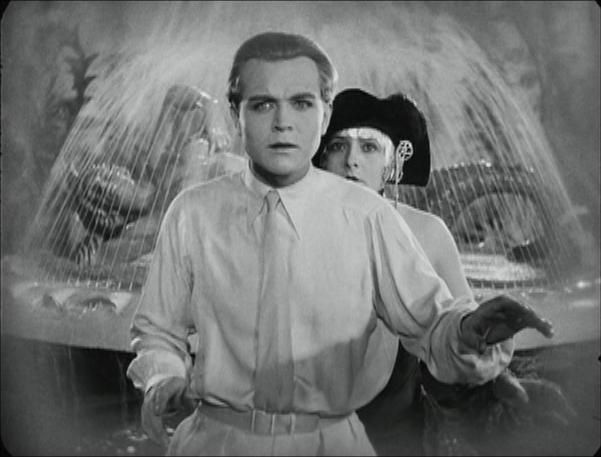
Freder's love interest is Maria, a beautiful girl who makes clandestine visits to the underground city of the laboring classes, where she preaches a gospel of social justice and equality.
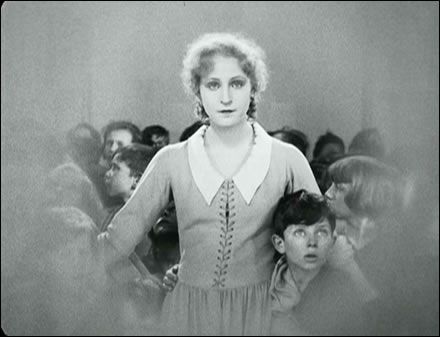
As per her name and her light-colored clothing, Maria is obviously a Virgin Mary figure.
Freder's father, Joh Fredersen, is the leader of Metropolis. Fredersen fears that Maria's preaching could lead to a rebellion of the working classes against bourgeois rule, destroying his shining city forever.
Accordingly, Fredersen enlists the mad scientist Rotwang to make his "Machine-Man" (the film's famous robot) into an exact likeness of Maria, a duplicate who will engage in depraved and profane acts and so destroy her base of support among the pious poor.
Rotwang kidnaps Maria and takes her to his laboratory, where he hooks her up to his machines, infusing his robot with her visage. Maria is glimpsed naked; the scene is a symbolic rape. Freder, meanwhile, searches for his missing girlfriend, but is unable to penetrate Rotwang's inner sanctum, and sits helplessly on the doorstep outside as Rotwang works his devilry.
With the real Maria safely imprisoned, the False Maria robot takes her place. False Maria quickly establishes herself as a Whore of Babylon figure, attending the parties of rich aristocrats clad only in a white skirt and a couple of pasties.

Of course everything eventually turns out well again in the end. Maria escapes from captivity; Joh Fredersen realizes the error of his ways and turns against Rotwang; Freder and Rotwang fight on the rooftop of a cathedral, and Rotwang plunges to his doom.
In the finale Joh Fredersen pledges to improve the lot of the workers beneath Metropolis. His newfound purity of heart is symbolized by his hair, which has turned white after watching his son battle Rotwang on the perilous cathedral roof.
Obviously quite a lot of the visual symbolism of Metropolis recurs in Lucas's rough draft. A hero clad all in white; a heroine represented as the Virgin Mary; the rape of the heroine; her subsequent transformation into a bare-breasted Whore of Babylon figure.
Of course, Lucas couldn't resist the temptation once more to recast an older villainous figure into a new heroic one, as he did many times elsewhere in this draft. Thus the nakedness that in Lang's film was emblematic of the Whore of Babylon becomes for Lucas a representation of the goddess Liberty.
“That Darth Vader, man. Sure does love eating Jedi.”
In Lucas' rough draft script there is a constant theme of the intertwining of the heroic and the monstrous. Figures from earlier films who were once deemed monsters now become Lucas's heroes.
R2-D2 is a Wellsian Martian tripod; C-3PO is the robot from Metropolis; Han Solo is the Creature from the Black Lagoon; Chewbacca is King Kong.
Prince Valorum is a Black Knight and a traitor to his Imperial masters. Annikin Starkiller is a wild and fierce warrior in the vein of Conan the Barbarian, an unstoppable force of bloodshed when roused to anger. And even Princess Leia is represented as the Whore of Babylon.
What gives?
Likely Lucas had in mind the original Japanese title of The Hidden Fortress. As famed Kurosawa scholar Donald Richie points out in a book Lucas owned, the title in Japan is actually Three Bad Men in a Hidden Fortress.
The "three bad men" are the two peasants, Tahei and Matashichi, and the Princess's protector, General Rokurota Makabe (played by Toshiro Mifune). The peasants are obviously "bad," for they are both cowards who complain when put to work, and they argue with each other constantly. They would gladly ravish the Princess and steal her gold in a heartbeat--if only they could agree how to divvy the gold up.
But General Makabe is bad too. He is bad, Richie argues, because he is so consumed by his devotion to his duty--serving the Princess--that he has lost all human feeling. He turns his own teenage sister in to the authorities hunting for the fugitive Princess Yuki, lettting her be executed as a decoy to throw the enemy off the trail of the real Princess.
This is arguably also the failing of General Skywalker, the Rokurota Makabe character, in Lucas' rough draft. Skywalker doesn't even blink when Leia's mother and her entourage commit suicide via nuclear blast.
Apparently Lucas felt that, in keeping with the spirit of Kurosawa's film, each of the other heroes he added to the plot should be "bad" in his or her own way too. In some cases this extends only to outer appearances, but in others (Annikin Starkiller, for instance) the descriptor is quite apt.
“That Darth Vader, man. Sure does love eating Jedi.”
One other thing, mentioned solely because it disturbs me greatly and I can't unthink it: looking back over the rough draft, I noticed there are nine trappers mentioned in the scene where Starkiller goes on his murderous rampage, of whom he kills eight. Afterwards Leia is dressed like Fritz Lang's Whore of Babylon for the remainder of the film.
And in The Hidden Fortress, before they're prevented from acting out their desires, Matashichi and Tahei agree to take turns having their way with the Princess. Do the math. And pass the brain bleach, please.
“That Darth Vader, man. Sure does love eating Jedi.”
Also, the Metropolis parallels don't stop with the SW rough draft. Consider that Joh Fredersen is the villainous father of the principal hero, Freder, and that Fredersen the elder ends up being redeemed at the end of the film. I think that Fritz Lang's film was very much on Lucas's mind when he finally decided that Darth Vader was Luke's father.
Which also makes me wonder--could we make another link, between the evil mad scientist Rotwang (who always dresses in black, and whose house is decorated with occult pentagrams) and the sorcerous Emperor of ROTJ?
Of course, the Force lightning that Palpatine shocks Luke with in ROTJ is another idea derived from the 1974 rough draft, namely from the electric torture General Darth Vader uses on Leia Aquilae. (Poor Leia. Between this, losing both her parents, and the heavily implied offscreen gang-rape, she's clearly the victim of a conga-line of trauma.)
“That Darth Vader, man. Sure does love eating Jedi.”
ATMachine said:
could we make another link, between the evil mad scientist Rotwang (who always dresses in black, and whose house is decorated with occult pentagrams) and the sorcerous Emperor of ROTJ?
Don't evil sorcerers wear black cloaks and hoods in every fantasy story?
*cough*Saruman*cough*
Incidentally, in the 1974 rough draft Annikin Starkiller apparently has black hair, and Princess Leia is a redhead. In the Dune series Paul Atreides has black hair, and his girlfriend Chani has red hair, which she passes on to their twin children.
On the other hand, the Ralph McQuarrie drawings of Luke and Leia from the third draft, where they're both blondes, are more reminiscent of the original 1936 Flash Gordon serial.
In his first screen outing Flash kept his blond hair from the comics page, but his normally brunette girlfriend Dale Arden was transformed into a blonde herself, in an attempt to capitalize on the popularity of Jean Harlow. (Dale regained her usual dark hair in the later Flash Gordon serials.)
Jean Harlow herself frequently dressed all in white, like Leia in SW.
As well, with the third draft's Han Solo having the brown hair of Buck Rogers, a blonde Princess Leia would also bear a resemblance to the yellow-haired Wilma Deering of the Buck Rogers comic strip.
Han's rough-draft counterpart, Clieg Whitsun, is blond like Flash Gordon. Since Lucas likely already intended to suggest a love triangle here, the relationship between Clieg and the rough draft's Princess Leia would be visually analogous to that of Flash Gordon and the red-headed Princess Aura, daughter of Ming the Merciless. Of course, much like Flash and Aura, Clieg and Leia aren't meant to end up together.
“That Darth Vader, man. Sure does love eating Jedi.”
Some of the planet names in the rough draft of SW are clearly indebted to real-life stars and constellations, as well as literature and mythology.
Princess Leia's home planet, the desert planet Aquilae, has a name with three syllables that begins with the letter A, like Frank Herbert's Arrakis. However, it also evokes the name of Aquilonia, the kingdom ruled by Conan the Barbarian in Robert E. Howard's stories. The form of the name itself comes from the real-world constellation Aquila, the Eagle.
Interestingly, the brightest star in Aquila (which, in astronomical terms, is catalogued as Alpha Aquilae) is Altair. Altair IV was the desert planet featured in Forbidden Planet. The numeral recurs in SW with the "forbidden planet" of Yavin IV.
In Dune, House Harkonnen's home planet, Giedi Prime, was said to orbit the star 36 Ophiuchi B. This resulted in Ophuchi (with one letter removed) becoming the name of the planet of "the chrome companies" in the rough draft.
Alderaan, at this stage the name of the capital city of the Empire, derives from the real-world star names Aldebaran (Alpha Tauri) and Alderamin (Alpha Cephei).
Additionally, in notes for the Journal of the Whills outline, Lucas considered naming Aquilae Yoshiro (after Toshiro Mifune). Alderaan also had an alternate name: Brunhuld (after Brynhild the Valkyrie, girlfriend of Sigurd the dragon-slayer in Norse mythology).
The two races on Aquilae/Yoshiro were to be the Bebers (the humans) and "the Hubble people," a species of green-skinned aliens much like Edgar Rice Burroughs' Green Martians. The name Hubble derives from astronomer Edwin Hubble.
Clearly Lucas was researching Norse mythology at this early stage, because the Journal of the Whills outline features a ship named Balmung (named after Siegfried's sword in the Nibelungenlied, a German variant of the story of the Norse hero Sigurd).
Moreover, Sigurd inherits his sword as a young man from his deceased father Sigmund, and uses it to kill the dragon Fafnir--an idea that very obviously had an impact on Lucas' finished film of 1977.
“That Darth Vader, man. Sure does love eating Jedi.”
What interests me most about all this is how many of these ideas that obviously more sensible people convinced George to drop or heavily alter for the OT cropped up in (or were shoehorned into) the PT, once he had absolute control. Almost as a middle finger to those people who reined him in in the 70s.
As interesting as the drafts are to read, I wonder if we all would have loved Star Wars like we do now if Lucas had been able to run with his original plan. I feel like the answer would be no.
Keep Circulating the Tapes.
END OF LINE
(It hasn’t happened yet)
I think a Star Wars film based off of the '74 draft would have eventually became a cult classic. Beyond that, though, I don't think it would have had much staying power amongst the general public.
You guys are likely right that a film version of the 1974 SW rough draft would have been a box office flop (even if it did wind up becoming a cult classic later on).
The real problem with this draft is the characterization, or lack thereof. For instance, Annikin Starkiller has too much of Conan the Barbarian and Toshiro Mifune in him to be anywhere near as likeable as the wide-eyed naivete of Mark Hamill is in the final film.
But also, the rough draft as written would surely have been quite expensive to produce. If the film flopped in general release it likely wouldn't have made its money back.
Combined with the earlier box-office failure of THX 1138, filming this draft might have killed Lucas's film career before it really ever took off.
But in that case we wouldn't have Raiders of the Lost Ark. So I think overall the actual state of affairs is a net win.
“That Darth Vader, man. Sure does love eating Jedi.”
Some other additional musings:
The idea from the third draft that Princess Leia would look exactly like Luke, so as to communicate visually that they are two halves of one being and thus soul mates, may actually explain why Lucas didn't have Luke "get the girl" in the later films.
When Lucas cast Carrie Fisher as Leia, it was obviously not for physical resemblance to the blond Mark Hamill. As a brunette, Fisher better resembles the black-haired Leia (based upon Dale Arden from Flash Gordon) seen in Alex Tavoularis' storyboards. Consequently, she likely didn't fit the mold for Lucas's mental picture of Luke's girlfriend (i.e., a mirror image of him).
As a result of this dissonance, I would guess, in the second film Lucas decided to pair up Leia and Han, instead of having her get together with Luke as envisioned during SW 1977. Luke, meanwhile, would be associated with a girl who looked exactly like him, as per the idea from the original film.
However, since it would be extremely silly to just drop in another Princess as Luke's girlfriend, Lucas decided instead to make this new female character Luke's lost twin sister--taking the already-intended physical resemblance and running with it.
The plot thread of Luke's lost sister was meant to be fleshed out in the films following ESB--including the Sequel Trilogy as it was then imagined.
But after the exhaustion that overseeing the making of ESB led him to, Lucas decided to wrap things up with just one more film. The resulting compressed storyline meant that he had to find a way to introduce Luke's sister quickly.
He settled for making the lost sister be Leia--bringing his initial idea for Luke's "other half" full circle. Of course, this meant dropping the earlier intended notion of a marked physical resemblance entirely.
---
On another note, poor Leia in the third draft actually ends up being the recipient of Vader's partial Force choke (used on Admiral Motti in the final film).
And later in the third draft script it's implied that Vader and two Imperial officers are the ones who physically beat her up, leaving her unconscious and bloody when the heroes break open her prison cell.
Paired with the Father Vader and Sister Leia retcons, that would have made for even more awkward viewing than the torture droid scene in the final film.
“That Darth Vader, man. Sure does love eating Jedi.”
Also, the whole idea with Leia being Luke's identical "other half" is clearly a visual and symbolic play on the Jungian idea of the anima/animus--respectively, the latent "female" portion of a man's psyche and the "male" part of a woman's.
In Jungian psychology, attaining a healthy relationship with this buried "opposite" part of one's personality is a critical part of becoming a well-adjusted person.
Fitting with the gender inversion associated with Jung's anima/animus, the third draft's Luke Starkiller is naive and idealistic in ways that can easily be construed as feminine, whereas the strong-willed Princess Leia gets roughed up in a fashion befitting Clint Eastwood or Toshiro Mifune. The male lead is girlish and the female lead is a tomboy.
(This idea likely also explains Luke's shaggy haircut--in the second draft he had Flash Gordon-esque short hair.)
And in the rough draft, Leia's gang-rape is the catalyst for a symbolic and visual descent from Madonna to whore--a pervasive dichotomy concerning women in Western thought, famously identified by Sigmund Freud.
Obviously Lucas was reading up on Freudian and Jungian psychology from very early on, in an effort to invest his space film with some archetypal symbolism. Darth Vader as Oedipus complex, anyone?
“That Darth Vader, man. Sure does love eating Jedi.”
A bit more on Darth Vader as conceived in Oedipal terms: Freud stated that the Oedipus complex--the desire of the son to supplant the father--is connected to castration anxiety, the fear that the father will emasculate the son. Lucas has openly acknowledged that Luke's loss of a hand in his ESB duel with Vader was conceived as a symbolic castration scene.
It's interesting how all the Freudian imagery in the rough drafts of SW 1977 is connected with Princess Leia, whereas in the later films it revolves around Luke's father.
This dovetails with the fact that in the first film, Luke was meant to end up romantically linked with the Princess--whereas the subsequent films abandoned this and focused on Luke's discovery of his parentage, an idea not present in 1977.
---
One thing in my initial post may actually be incorrect: the rough-draft Princess Leia's "long auburn hair tied in braids" was likely not yet based on the "buns" of Queen Fria from Flash Gordon.
Instead, Lucas may have had in mind the long twin braids of Princess Kriemhild from Fritz Lang's 1924 film Die Nibelungen.
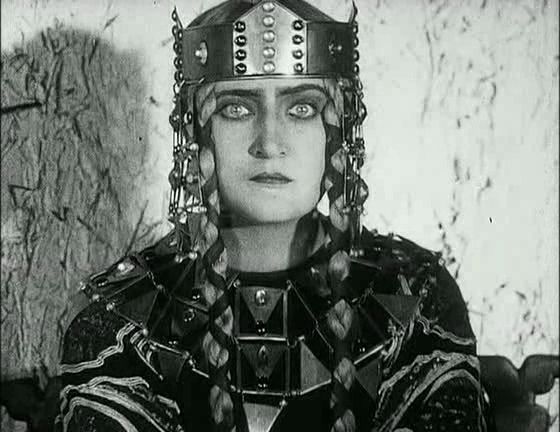
Die Nibelungen is an adaptation in two parts of the medieval German epic poem known as the Nibelungenlied, which tells the story of Siegfried the dragon-slayer. Lang made it around the same time he made Metropolis, and like that film, Die Nibelungen is jam-packed with arresting visuals.
We know that Lucas was quite interested in Fritz Lang's early work: he borrowed from Metropolis not only the likeness of its robot for C-3PO, but also the Whore of Babylon motif for Princess Leia's disarrayed costume.
And we also know that Lucas was reading up on Norse mythology: he considered naming a planet after Brynhild the Valkyrie, a character in Siegfried's story, and Luke Skywalker's name comes straight from "Loki Sky-walker." So Lang's Die Nibelungen would have appealed to him on both counts.
In fact, the very name of the rough-draft hero, "Annikin Starkiller," may have been designed to evoke that of Siegfried/Sigurd, who slew the dragon Fafnir and was known thereafter as "Sigurd Fafnir's-bane."
(The Anakim were a race of giants from the Old Testament, so presumably Annikin's first name is meant to suggest strength and large stature, akin to that of the mythic Siegfried. However, the exact spelling used by Lucas at this time recalls the name of director Ken Annakin.)
Kriemhild is Siegfried's love interest in Die Nibelungen, so it would be fitting for Lucas to borrow her hairstyle for his princess character.
The probability of this connection is enhanced by other visual borrowings from Die Nibelungen which show up elsewhere in Lucas's work.
Take a look at Fritz Lang's Etzel, the barbarian king of the Huns:
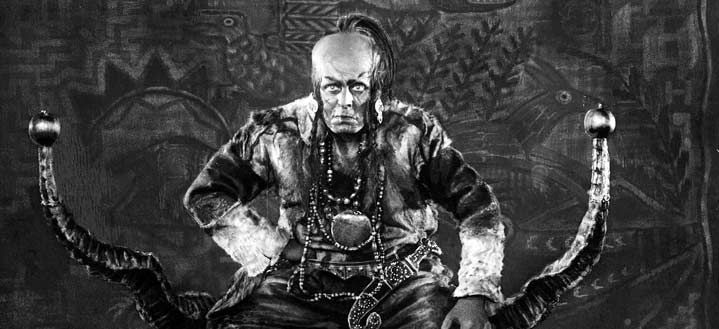
Etzel's hairstyle is significant: it features a shaved head with a topknot and two long front locks.
The shaved head with topknot would recur in Moebius's concept art for Sorsha in Willow (a style recycled for TPM on Aurra Sing).
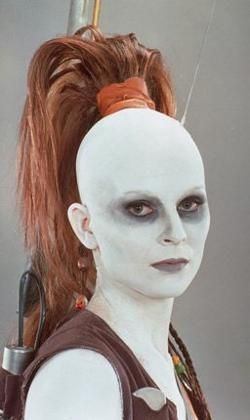
The shaved head and forelocks, on the other hand, would show up with the locks braided (recalling Kriemhild's hairstyle) in concept art for Obi-Wan's hairdo in TPM. (In the final film only one of the braids was used.)
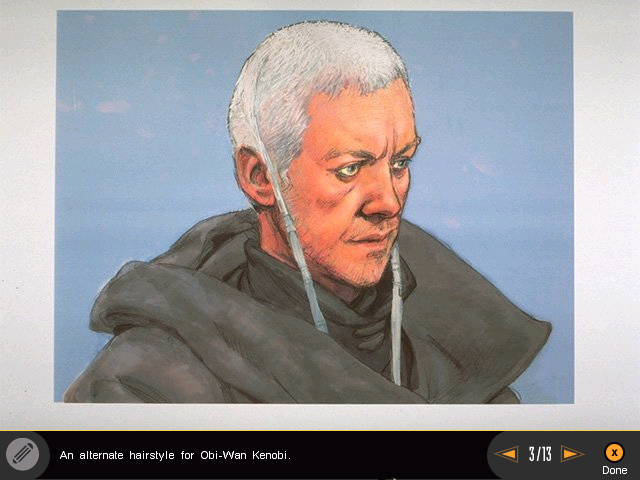
Another of Lang's potent images in Die Nibelungen involves a connection between trees and death.
When Siegfried bathes in the blood of the dragon Fafnir, rendering him invulnerable, a leaf from a tree falls on his back, leaving one spot unmarked and thus open to attack. Later Siegfried finds the evil dwarf Alberich and slays him; in front of Alberich's cave there is a large tree.
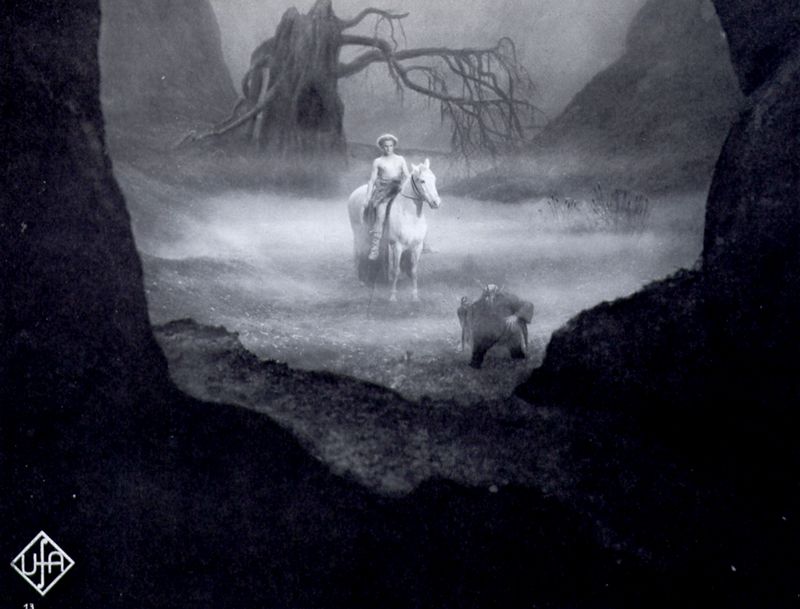
When Siegfried makes a vow of blood-brotherhood with the Burgundian warriors Gunther and Hagen, who will eventually betray and murder him, they pledge their oaths in front of a tree. And when Siegfried dies, Kriemhild has a vision of a tree turning into a skull.
This motif would be reused in the script for ESB, in which a tree was placed at the opening of the sinister cave on Dagobah where Luke has a vision of Darth Vader.
The idea also apparently recurred in early concepts for Willow, where a magical tree with an interior of solid gold (an idea taken from the concealed gold in The Hidden Fortress) was located at the entrance to a dragon's cave.
“That Darth Vader, man. Sure does love eating Jedi.”
Another film that likely inspired some of the visuals of SW 1977 is Sergei Eisenstein's Alexander Nevsky from 1938.
In that film the main villains are the Teutonic Knights, the vanguard of a German army that is invading Russia. The plot of the film concerns Russian prince Alexander Nevsky's repulsion of the German advance. The movie's climactic battle occurs on a frozen lake, so it's rather reminiscent of the Battle of Hoth in ESB.
The Teutonic Knights are dressed in white robes, and carry shields and broadswords. They were likely the inspiration for the white-armored stormtroopers of the 1975 second draft, who also carry shields and laser-swords.
Also, in one scene, the white-clad knights and white-robed German priests lynch old men and women, and throw babies onto bonfires. This orgy of violence is orchestrated by a black-robed monk.
The contrast of white and black robes among the villains is reminiscent of the appearance of Darth Vader, surrounded by his legions of stormtroopers, in the opening of SW 1977.
Prince Alexander's strategy for defending the town of Novgorod against the Germans is as follows: "I know nothing of defense. We'll attack instead!" This is exactly General Skywalker's strategy for defending Aquilae in the 1974 rough draft.
The ruler of Novgorod is referred to as "Lord Novgorod," which is similar to how Leia Aquilae is the princess of the planet Aquilae in the rough draft.
The Russian men all have bowl haircuts, much like the hairstyle Luke Skywalker sports in SW 1977. The women all wear their hair in two long braids, like Kriemhild in Fritz Lang's Die Nibelungen (and presumably Leia Aquilae in the 1974 rough draft).
Finally, I don't know whether this was the case in the version Lucas saw, but when I watched the film, the subtitles were extremely archaic, with lots of subject-verb inversion. I wonder if this film's dialogue wasn't the inspiration for Yoda's speech pattern.
“That Darth Vader, man. Sure does love eating Jedi.”
There's one other thing that Lucas probably borrowed from Alexander Nevsky: in Eisenstein's film the heroic Russian soldiers wear helmets that leave their faces visible, but the helmets of the Teutonic Knights conceal their faces entirely.
This is mirrored exactly by the helmets of the Rebel and Imperial pilots during the Death Star trench run--the Rebel pilots have their faces visible and the Imperial pilots do not.
“That Darth Vader, man. Sure does love eating Jedi.”
I find that barbarian king fascinating.

How much input did George have on Shadows of the Empire I wonder...